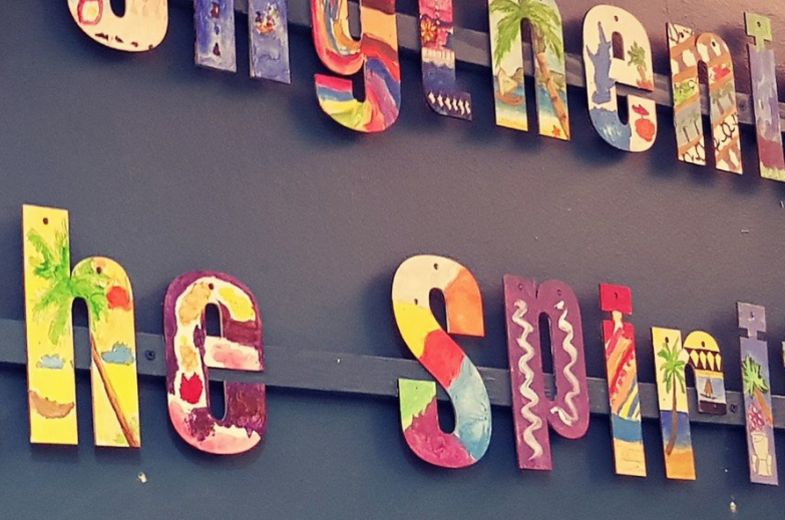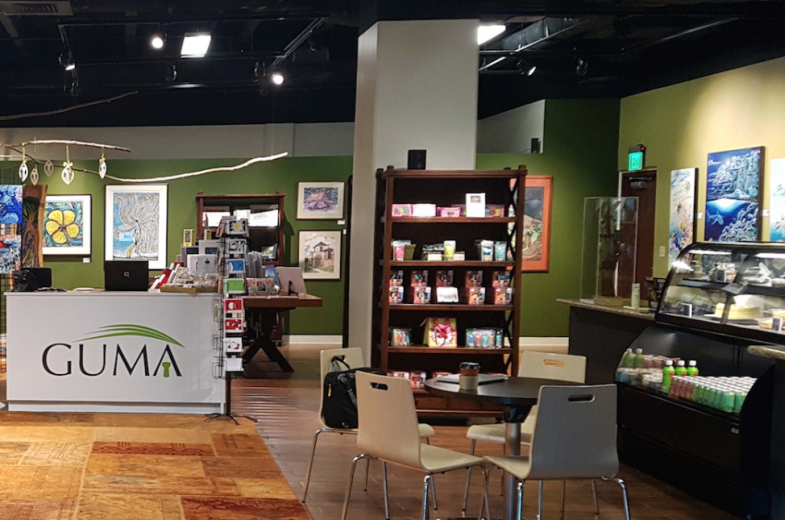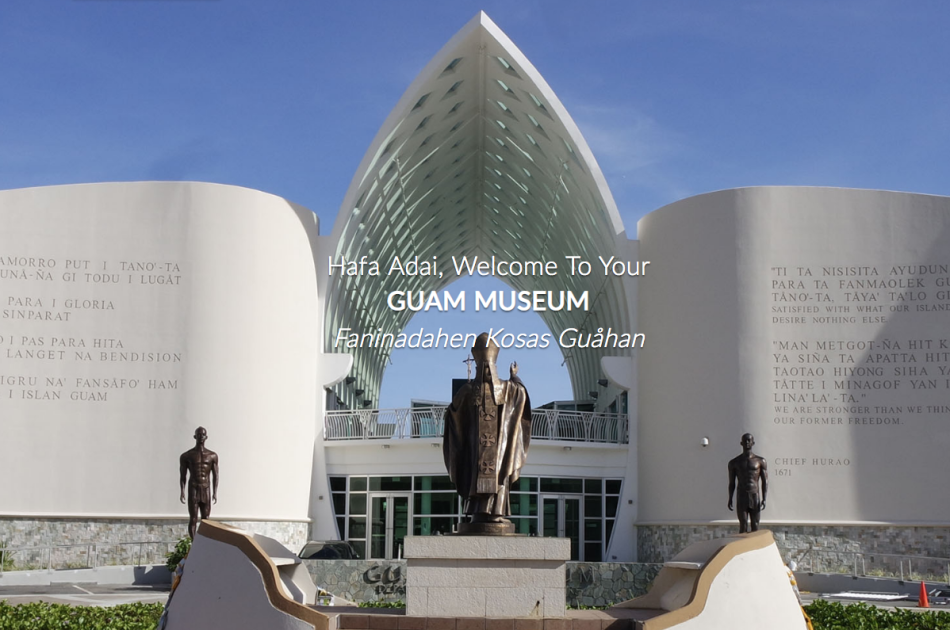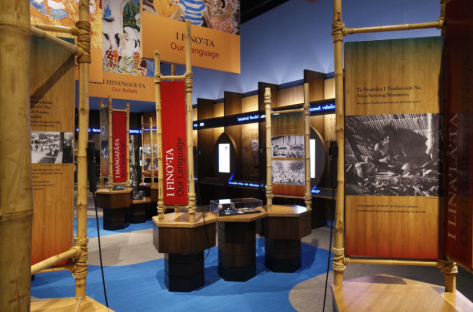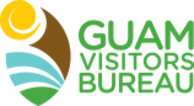Guam Museum
- 193 Chalan Santo Papa, Juan Pablo Dos, Hagåtña, **, 96910
- Phone: (671) 989-4455
- Email: info@guammuseum.org
about Guam Museum
THE HISTORY OF THE GUAM MUSEUM
STARTING A MUSEUM
The idea of creating a museum for Guam started many years ago. In 1926 the Guam Teachers Association, led by Dr. Ramon Sablan, a physician and teacher best known as the author of the “Guam Hymn,” asked residents and friends of Guam to start collecting their antiques and other artifacts for a museum that would protect their history and Chamorro culture. The editor of the Guam Recorder, one of the earliest publications printed and circulated on Guam, also called for the opening of a museum.
From 1924 to 1926, the Honolulu-based Bishop Museum employed amateur archeologist Hans Hornbostel to collect specimens from Guam and the northern Mariana Islands. Hornbostel shipped many artifacts—some over 3,000 years old—including pottery, fishhooks, latte stones (stone pillars) and even human skeletal remains to Hawaii. A Guam museum was seen as a way to ensure that these items could be returned and that the documents and objects important to the history and pre-history of the Chamorro people could be protected for future generations.
Established in 1932 when Governor Edmund Root authorized the use of a small building at the Paza de Espana in Hagatna, the Guam Museum was operated by the Guam-based American Legion Mid-Pacific Post 1, which opened the doors of the museum the following year. Hiram Elliott served as the first director and Joaquin T. Aguon as the first curator. Elliott appealed to the public to see “the most interesting and curious artifacts of the ancient Chamorro civilization.” Around this time the Bishop Museum returned a portion of the skeletal remains and artifacts originally collected by Hornbostel. The Legion operated the museum for three years, offering tours for transient visitors to Guam until 1936 when the museum was formally turned over to the naval government. The Navy then recruited Margaret Higgins, a naval officer’s wife, as the museum’s curator. From 1937 to 1941, Agueda Iglesias Johnston was the museum committee member in charge of the ancient Chamorro collections. From these simple beginnings the museum underwent several transformations.
The onset of World War II and the occupation of Guam by Japanese Imperial forces saw many of the artifacts removed from the museum and taken to Japan. The building itself was destroyed from heavy bombing during the American liberation of Guam in 1944. The postwar reconstruction of the island saw the recovery of some items from the museum’s collections, but no immediate plans to rebuild the museum itself.
In 1949, the Monuments and Museum Committee, headed by G. W. Brookhardt, was set up to discuss the re-establishment of the Guam Museum. In 1951, the first appointed civilian Governor Carlton Skinner, placed the Guam Museum under the Department of Land Management. His successor, Governor Ford Elvidge, reorganized the museum under the Monuments and Museum Committee and tasked the Guam Women’s Club with the formation of the Parks and Monuments Committee. Through their efforts, the Guam Women’s Club re-opened the museum in 1954 at the Garden House in the Plaza de España, and staffed it with volunteers. Thelma Glenn was appointed as Museum Director in 1955, and was hired full-time in 1957 until her retirement in 1976.
In 1960, Governor Richard Lowe transferred the Guam Museum to the Guam Public Library System. Two years later, a large portion of the collections was destroyed by Typhoon Karen, but people were still interested in what the museum, though deemed inadequate, had to offer. In 1965, Speaker Carlos P. Taitano of the Guam Legislature proposed the construction of a two-story Spanish style building to house the Guam Museum.
In 1969, under Governor Manuel L. Guerrero, a public law designated the Guam Museum as the official depository and custodian of Guam artifacts. The museum remained active in its Garden House location throughout the 1970s and 1980s, slowly increasing its collections and holding several public exhibits. Laura Souder, attached to the museum since her childhood days through the work of her father, Paul Souder, became an official curator and director, followed by William Hernandez, and then Rita Franquez. By 1992, the Guam Museum separated from the Public Library and became a line agency of the government, but in 1994, a lack of funds forced the museum to close its Garden House location. The next two decades saw the museum relocated to various sites around the island.
In 1994, the Guam Museum opened an exhibition hall at Adelup. A branch of the museum opened in Tumon in 1996 but was closed several months later, and the administrative office and repository was opened in Tiyan, the site of the former Naval Air Station. Former Senator Tony Palomo, a journalist and Guam historian, served as the Director of the Guam Museum from December 1995 until his retirement in 2007. Palomo supported the creation of a permanent building for the museum.
In 1999, Public Law 25-69 created the Department of Chamorro Affairs and the Guam Museum was incorporated as a division of DCA. In 2002, however, Typhoons Chata’an and Pongsonga damaged the Adelup and Tiyan facilities, forcing the Adelup site to close. Nevertheless, the museum continued to operate and offer exhibitions for the public. Under Palomo’s leadership, satellite exhibit facilities were opened at the Guam Premier Outlets in Tamuning for a year, and at the Micronesian Mall in Dededo from 2004 to 2007, attracting thousands of visitors.
In 2005, an executive order by Governor Felix Camacho created the Guam Museum Facilities Construction and Cultural Heritage Task Force to plan for the construction of a permanent facility for the Guam Museum. The Guam Museum Foundation was incorporated in 2006, and with public support, the architectural firm of Laguaña + Cristobal was selected to design the new museum facility. Governor Eddie Calvo directed the new museum be located in Skinner Plaza and it be renamed in honor of former director Palomo. Construction of the new facility began in 2014. Officially named the Senator Antonio M. “Tony” Palomo Guam Museum and Chamorro Educational Facility, the museum currently has over 250,000 unique artifacts, documents and photographs in its collections.
MORE: https://www.visitguam.com/blog/post/3423/
STARTING A MUSEUM
The idea of creating a museum for Guam started many years ago. In 1926 the Guam Teachers Association, led by Dr. Ramon Sablan, a physician and teacher best known as the author of the “Guam Hymn,” asked residents and friends of Guam to start collecting their antiques and other artifacts for a museum that would protect their history and Chamorro culture. The editor of the Guam Recorder, one of the earliest publications printed and circulated on Guam, also called for the opening of a museum.
From 1924 to 1926, the Honolulu-based Bishop Museum employed amateur archeologist Hans Hornbostel to collect specimens from Guam and the northern Mariana Islands. Hornbostel shipped many artifacts—some over 3,000 years old—including pottery, fishhooks, latte stones (stone pillars) and even human skeletal remains to Hawaii. A Guam museum was seen as a way to ensure that these items could be returned and that the documents and objects important to the history and pre-history of the Chamorro people could be protected for future generations.
Established in 1932 when Governor Edmund Root authorized the use of a small building at the Paza de Espana in Hagatna, the Guam Museum was operated by the Guam-based American Legion Mid-Pacific Post 1, which opened the doors of the museum the following year. Hiram Elliott served as the first director and Joaquin T. Aguon as the first curator. Elliott appealed to the public to see “the most interesting and curious artifacts of the ancient Chamorro civilization.” Around this time the Bishop Museum returned a portion of the skeletal remains and artifacts originally collected by Hornbostel. The Legion operated the museum for three years, offering tours for transient visitors to Guam until 1936 when the museum was formally turned over to the naval government. The Navy then recruited Margaret Higgins, a naval officer’s wife, as the museum’s curator. From 1937 to 1941, Agueda Iglesias Johnston was the museum committee member in charge of the ancient Chamorro collections. From these simple beginnings the museum underwent several transformations.
The onset of World War II and the occupation of Guam by Japanese Imperial forces saw many of the artifacts removed from the museum and taken to Japan. The building itself was destroyed from heavy bombing during the American liberation of Guam in 1944. The postwar reconstruction of the island saw the recovery of some items from the museum’s collections, but no immediate plans to rebuild the museum itself.
In 1949, the Monuments and Museum Committee, headed by G. W. Brookhardt, was set up to discuss the re-establishment of the Guam Museum. In 1951, the first appointed civilian Governor Carlton Skinner, placed the Guam Museum under the Department of Land Management. His successor, Governor Ford Elvidge, reorganized the museum under the Monuments and Museum Committee and tasked the Guam Women’s Club with the formation of the Parks and Monuments Committee. Through their efforts, the Guam Women’s Club re-opened the museum in 1954 at the Garden House in the Plaza de España, and staffed it with volunteers. Thelma Glenn was appointed as Museum Director in 1955, and was hired full-time in 1957 until her retirement in 1976.
In 1960, Governor Richard Lowe transferred the Guam Museum to the Guam Public Library System. Two years later, a large portion of the collections was destroyed by Typhoon Karen, but people were still interested in what the museum, though deemed inadequate, had to offer. In 1965, Speaker Carlos P. Taitano of the Guam Legislature proposed the construction of a two-story Spanish style building to house the Guam Museum.
In 1969, under Governor Manuel L. Guerrero, a public law designated the Guam Museum as the official depository and custodian of Guam artifacts. The museum remained active in its Garden House location throughout the 1970s and 1980s, slowly increasing its collections and holding several public exhibits. Laura Souder, attached to the museum since her childhood days through the work of her father, Paul Souder, became an official curator and director, followed by William Hernandez, and then Rita Franquez. By 1992, the Guam Museum separated from the Public Library and became a line agency of the government, but in 1994, a lack of funds forced the museum to close its Garden House location. The next two decades saw the museum relocated to various sites around the island.
In 1994, the Guam Museum opened an exhibition hall at Adelup. A branch of the museum opened in Tumon in 1996 but was closed several months later, and the administrative office and repository was opened in Tiyan, the site of the former Naval Air Station. Former Senator Tony Palomo, a journalist and Guam historian, served as the Director of the Guam Museum from December 1995 until his retirement in 2007. Palomo supported the creation of a permanent building for the museum.
In 1999, Public Law 25-69 created the Department of Chamorro Affairs and the Guam Museum was incorporated as a division of DCA. In 2002, however, Typhoons Chata’an and Pongsonga damaged the Adelup and Tiyan facilities, forcing the Adelup site to close. Nevertheless, the museum continued to operate and offer exhibitions for the public. Under Palomo’s leadership, satellite exhibit facilities were opened at the Guam Premier Outlets in Tamuning for a year, and at the Micronesian Mall in Dededo from 2004 to 2007, attracting thousands of visitors.
In 2005, an executive order by Governor Felix Camacho created the Guam Museum Facilities Construction and Cultural Heritage Task Force to plan for the construction of a permanent facility for the Guam Museum. The Guam Museum Foundation was incorporated in 2006, and with public support, the architectural firm of Laguaña + Cristobal was selected to design the new museum facility. Governor Eddie Calvo directed the new museum be located in Skinner Plaza and it be renamed in honor of former director Palomo. Construction of the new facility began in 2014. Officially named the Senator Antonio M. “Tony” Palomo Guam Museum and Chamorro Educational Facility, the museum currently has over 250,000 unique artifacts, documents and photographs in its collections.
MORE: https://www.visitguam.com/blog/post/3423/










